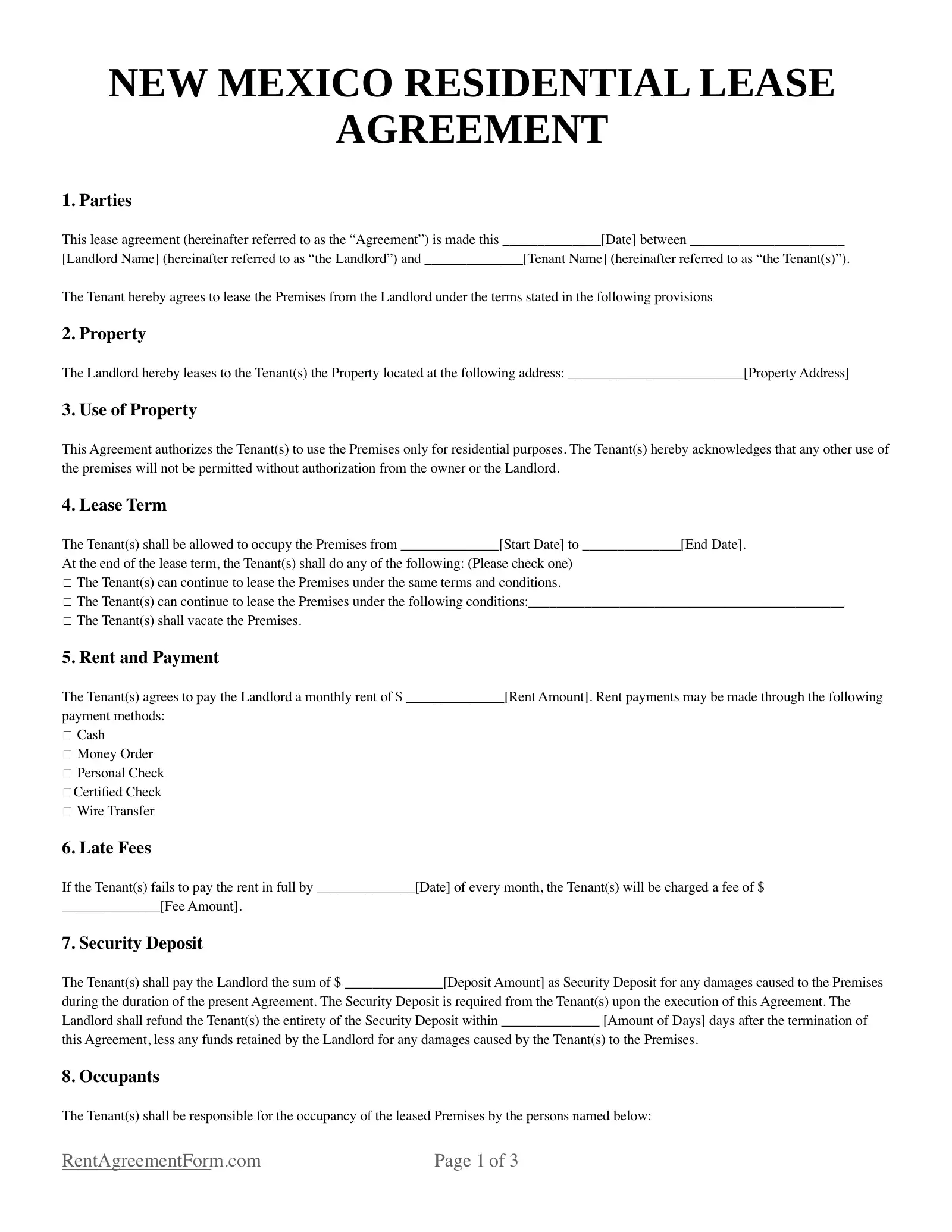New Mexico Residential Lease Agreement Form
New Mexico has some of the most beautiful sights in the country. Its white sands, beautiful mountains, and striking red rocks create an unforgettable landscape. In addition, people love New Mexico because of its affordable housing and low state taxes.
Are you looking to move to New Mexico? Then, you’ll need realtors, a rental application form, and a New Mexico residential lease agreement form.
A New Mexico residential lease agreement form is a simple document that outlines all the terms of a property’s lease. Before coming up with an agreement, the landlord and tenant must agree to certain terms like the duration of occupancy, the rent amount to be paid, its due date, and disclosures about the property as well as its maintenance.
If you're unsure where to start, our free rental agreement New Mexico form can be an excellent resource to guide you through the process.
Overall, the landlord must ensure that the property is secure and habitable. In the event of any damages, the landlord must fix them. They must also provide a list of who is permitted on the estate, including pets. The tenant, on the other hand, should agree to the specified terms, including the amount of rent and payment terms.

Required Disclosures in New Mexico Residential Lease Agreements
When drafting a rental agreement, New Mexico law requires the landlord to include certain disclosures. This gives tenants peace of mind that the living conditions within a property are safe and habitable. Here are some of the required disclosures.
Lead-based Paint Disclosure
Lead-based paints emit volatile organic compounds (VOCs) that are harmful to one's health when inhaled. Although lead-based paint was banned in 1978, structures built before that year may still have VOCs.
These toxic fumes can cause organ failure and can be carcinogenic if an individual is exposed to them over a long period. The landlord must thus provide an Environment Protection Agency-approved template containing the detailed risks of lead paint exposure (Lead-Based Paint Hazard Reduction Act of 1992 § 1018).
Name and Address Disclosure
The landlord must also disclose their identity to the tenant by providing a copy of their government ID. In addition, the landlord’s name and address should be written on the lease for the tenant’s reference (NM Stat § 47-8-19).
Identity Disclosure
The landlord should provide the names of the individuals who can access the property or room before the tenant moves in (NM Stat § 47-8-19).
Late Fee Disclosure
To enforce a late fee, it should be mentioned in the lease agreement form along with the respective timeframe and amount. The landlord must include what they consider to be late rent and add how much the tenant must pay (NM Stat § 47-8-15).
Rent Grace Period in New Mexico
There are no laws governing the rent grace period in the state of New Mexico. The landlord can thus charge a late fee according to the disclosure they have drawn up in the agreement form.
Having said that, late fees cannot be more than 10% of the total rent amount.
Security Deposits
A security deposit is an amount paid by the tenant to the landlord before their lease begins. Its purpose is to give the landlord a measure of protection in case of undue liabilities, specifically unpaid rent or damage to the property. Should either of these occur, the landlord can deduct these expenses from the tenant’s security deposit.
In the state of New Mexico, lease agreements typically stipulate the equivalent of 1 to 2 months’ rent as a security deposit.
The landlord needs to keep this amount in a secure, separate account. They cannot use the security deposit for reasons outside these two scenarios. If the landlord incurs expenses due to repairs to the property, they must provide the tenant with a breakdown of the costs.
The security deposit can be returned to the tenant 30 days after the period of occupancy is over. If the landlord needs to exercise an early termination of the lease, the landlord must give due notice to the tenant (NM Stat § 47-8-18).